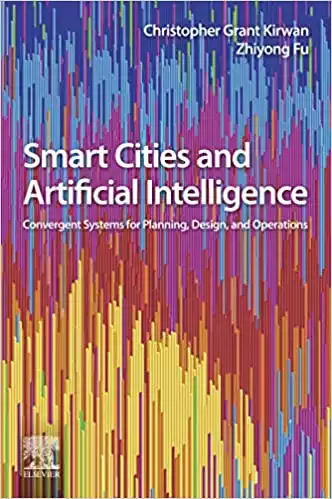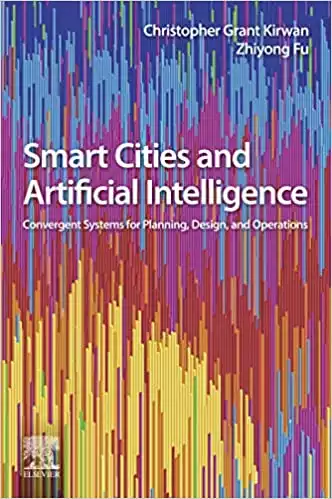Introduction
Science fiction has long promised us a desirable future filled with smart cities. We’ve all seen the illuminated metropolises of futuristic films like Blade Runner and The Fifth Element, where technology governs every aspect of daily life. However, few people know that real-life governments have already begun implementing the infrastructure and technology necessary for smart cities.
But what exactly is a smart city? And how can AI help build and maintain them? This blog post will discuss the context of sustainability in smart cities and how AI can play a crucial role in achieving it.
Table of contents
What are Smart Cities?
Let’s start with the basics. A smart city is one that utilizes technology and data to enhance the lives of its citizens. The range of possible implementations is vast, as we’ll discuss later, but here’s what you need to know.
City planners can utilize the necessary information gained from sensors and data analysis. The result is improved infrastructure and services.
The ultimate goal of a smart city is to create a more efficient and sustainable urban environment. In other words, they are designed with the future in mind. Regular operations can sometimes be optimized at the expense of long-term sustainability. Instead, a smart city takes a holistic approach to efficiency.
As of 2022, only a handful of cities have been officially designated as “smart.” These include bigger towns like New York, Copenhagen, Dubai, London, and Singapore. But many more worldwide implement data-driven city strategies and technologies in various capacities. However, we could argue that in order to truly be a smart city, technology must be integrated into all aspects of city planning and governance.
What Role Does AI Play In A Smart City?
AI and data analysis play a crucial role in smart city planning. Sensors collect vast amounts of data on daily operational functioning. That includes traffic patterns, energy use, waste management, and even air quality. This huge amount of information isn’t easily manageable without AI and machine learning algorithms.
AI can also automate various city services, such as waste collection and transportation. This systemic approach not only saves time and resources but it allows for strategic planning. There’s also the added benefit of better allocation of those resources in the long run.
Furthermore, AI can enhance public safety. It can detect potential threats in real time and alert the necessary authorities. In fact, some cities have already implemented AI-powered cameras to monitor crime and traffic.
But perhaps most importantly, AI is crucial to long-term city planning. Through data analysis and predictive modeling, AI can help city officials make informed decisions about sustainable development.
How Can AI Integrate Sustainability In Smart City?
In order for a smart city to be born, it must successfully integrate artificial intelligence into its core infrastructure. The thing is that infrastructure is sometimes built without much consideration for sustainability. The definition of sustainability is constantly evolving, but it broadly refers to:
“Meeting the needs of the present without compromising the ability of future generations to meet their own needs.”
Energy consumption is an excellent example of how AI can integrate sustainability into smart city planning. In the case of non-renewable energy sources like fossil fuels, AI can assist in efficient distribution and use. On the other hand, we can also use AI technology to monitor and optimize renewable energy, such as solar power(arrays) or wind(farms.)
AI can also play a role in sustainable transportation. This includes implementing efficient public transit systems and optimizing traffic patterns. Additionally, the use of self-driving vehicles and ride-sharing can also decrease carbon emissions. Urban growth is often associated with sprawl, but AI can make cities prioritize compact, walkable development.
Characteristics and Key Features of a Sustainable City
Now that we understand AI’s role in smart, sustainable cities, what other characteristics and features can we look for?
Improving Access to Green Spaces
It’s no secret that concrete jungles like New York can harm residents’ quality of life. Access to parks and green spaces is limited due to urban growth. Yet, a natural environment can promote physical activity and relaxation. They also have environmental sustainability benefits. They improve air quality and reduce greenhouse gas emissions.
A data-driven city can use AI to monitor and optimize the use of green spaces, as well as plan for new ones in underutilized areas. City planners can also use AI technology to increase the number of green roofs and vertical gardens. That would bring a natural environment into the cityscape.
Improve Water Conservation and Waste Management
Natural resources are a constant concern for sustainable cities. Smart cities can implement resource efficiency measures, such as using AI to monitor water usage.
Waste management is also a key issue for sustainable communities. This includes the efficient collection and disposal of waste. But we also need to reduce overall consumption through recycling and reuse programs. AI can aid with waste sorting and predict future waste levels.
Also Read: AI in Waste Management
AI-Driven Solar Infrastructure.
Many people support a sustainable future where renewable energy powers our cities. But implementing this infrastructure is one of the main challenges of sustainability. It requires significant investment and technical expertise. Solar power is a particularly popular option due to its relatively low carbon emissions and abundance.
Smart cities can use AI technology to optimize the use of solar panels and predict energy needs. It can forecast weather patterns to adjust energy production. AI can also help integrate solar power into the overall energy grid, allowing for efficient distribution to households and businesses.
Support Urban Farming
Beings sustainable doesn’t have to stifle economic growth. In fact, smart cities can reduce agricultural carbon emissions through urban farming. It involves using vertical farms and community gardens to produce fresh, local food. These sophisticated approaches to agriculture can also improve air quality. Not to mention they create green spaces within the city.
Urban farming can be a key player in the local food economy in areas where land is scarce, such as cities. With AI urban farming can become reality through monitoring, optimizing growing conditions and predicting crop yields. This approach allows for efficient use of resources and improved production.
Implementing Sustainable Architecture
Next is the concept of sustainable architecture. In essence, it involves the use of environmentally friendly building materials. We can also mention energy-efficient design concepts. For example, natural lighting and smart technology can reduce a building’s reliance on artificial lighting and heating. As for building materials, recycled materials can reduce the carbon footprint from production processes.
Smart cities can use AI to monitor a building’s energy usage and implement efficiency measures. It can also prove useful in the sustainable design process, helping architects incorporate sustainable features into their designs.
AI Improving Public Transport.
Another major problem of urban life is traffic. A data-driven city can use AI technology to optimize bus routes. By reducing the need for private vehicles, cities can reduce environmental degradation.
We’ve already seen how Uber uses AI to optimize ride-sharing. We can apply the same technology to public transportation. A green city is one where residents have accessible and efficient transportation options. Smart cities can provide this through AI-assisted public transportation.
AI Designing Walkable and Bikeable Cities
With the impending climate crisis, cities must encourage active transportation over emissions-heavy vehicles. Barcelona is famous for its superblocks, a street design concept that prioritizes pedestrians and cyclists over cars. Traffic is restricted within a 3 x 3 grid of 9 city blocks, leaving the inner areas for walkers and bikers to enjoy.
AI can aid urban planning initiatives like this. It can analyze traffic patterns and identify areas where a pedestrian or bike lanes could be implemented. The result is a more walkable compact city that reduces carbon emissions and encourages healthy lifestyles.
Autonomous Driving and Smart Cities.
Autonomous driving will change the way we plan the city drastically, with a fully autonomous driving we will not need any traffic lights, better traffic control, faster moving traffic and better ranges for electric vehicles.
EV Charging Stations
The electric vehicle is perhaps the most significant recent contribution to sustainability. Most governing bodies, from the EU to the United Nations, support a shift towards becoming carbon neutral. The impacts of climate change necessitate a reduction in carbon emissions from transportation.
But for this to be successful, a reliable and accessible charging infrastructure must be in place. Smart cities would need to integrate EV charging stations into their urban design. In fact, it is one of the crucial dimensions of sustainability.
Eventually, these stations would entirely replace traditional gas stations. AI is key for planning and managing this transition. It can also help optimize the use of these charging stations. Ideally, EV stations could even harness renewable energy, such as solar power, to charge vehicles.
Also Read: AI and Power Grids.
How can AI Secure Smart Cities?
Eco-friendly urban planning is great, but smart cities also require a certain level of security. In large metropolises, there’s always a risk of crime and terrorism. AI can assist in keeping cities safe by monitoring potential threats and alerting authorities. It can also aid in analyzing surveillance footage, helping law enforcement with investigations.
Traffic is also a significant source of danger for citizens, with car accidents causing countless injuries and deaths every year. Smart cameras, installed at intersections and on roads, can detect dangerous behavior.
In addition, smart cities will rely heavily on internet connectivity and technology. AI can secure these networks from cyber attacks, protecting the sensitive data of both the governing body and its citizens.
When it comes to protecting cities in terms of attacks from abroad, we already have AI systems in place. They detect and defend against incoming missiles.
Also Read: Artificial Intelligence and Urban Design
How Can AI Help Smart Cities Improve Financial Sustainability?
A data-driven city can improve economic growth in several ways. First, it can optimize budgeting. It can identify areas where money is being wasted and suggest cost-effective solutions. It can also analyze market trends to inform investment decisions, helping cities earn a profit and grow their economies.
Smart cities can use AI systems for automatic billing and tracking of expenses. It would streamline financial processes and reducing the potential for human error. Additionally, by using data-driven methods to increase efficiency and cut down on waste, cities can save money in the long run.
With AI aiding urban planning, smart cities can also attract more businesses and tourists, boosting revenue.
How Can AI Improve Equitability In Smart City?
Last but not least, smart cities must strive for equity amongst their citizens. That can extend to equal access to resources and opportunities, as well as fair treatment. Unfortunately, bias and discrimination are major parts of our society.
AI can ensure the equitable distribution of services and infrastructure. Think housing, transportation, and education. It can also identify and address discriminatory biases in city policies or hiring practices. If integrated ethically, AI can help cities create a more just and inclusive environment for all.
Of course, urban development strategies must also involve human oversight. We must ensure that AI systems do not perpetuate biased patterns or inequality in any way. Depending on how the AI is trained and used, it can either be a tool for progress or a vehicle for discrimination. It’s up to us, as a society, to choose the path toward equity and justice.
Conclusion
Smart, data-driven cities have the potential to improve our lives in countless ways. It’s important to consider how AI can assist in reducing environmental degradation. It can also make cities more secure, financially sustainable, and equitable.
By integrating AI responsibly into urban planning and decision-making, we can create a better future for all. It’s up to us to steer this technology toward progress and use it for the benefit of society.
As with any major change, there will likely be challenges and obstacles along the way. But by staying informed and committed to ethical implementation, we can elect to shape our cities and the world sustainably. The future is ours to create. Let’s make it a smart one.
References
Magazine, Science. “AI Trained to Control Traffic.” YouTube, Video, 13 Nov. 2018, https://www.youtube.com/watch?v=6gLHDCLT2Gc. Accessed 15 Feb. 2023.
Twitter, https://twitter.com/Ronald_vanLoon/status/1575420937771646976?s=20&t=VS8kS4738wg10X0Fi6PCvA. Accessed 15 Feb. 2023.
Shift, DW. “Smart City: How Do You Live in a Smart City?” YouTube, Video, 22 Oct. 2019, https://www.youtube.com/watch?v=VRRPy-yEKRM. Accessed 15 Feb. 2023.












